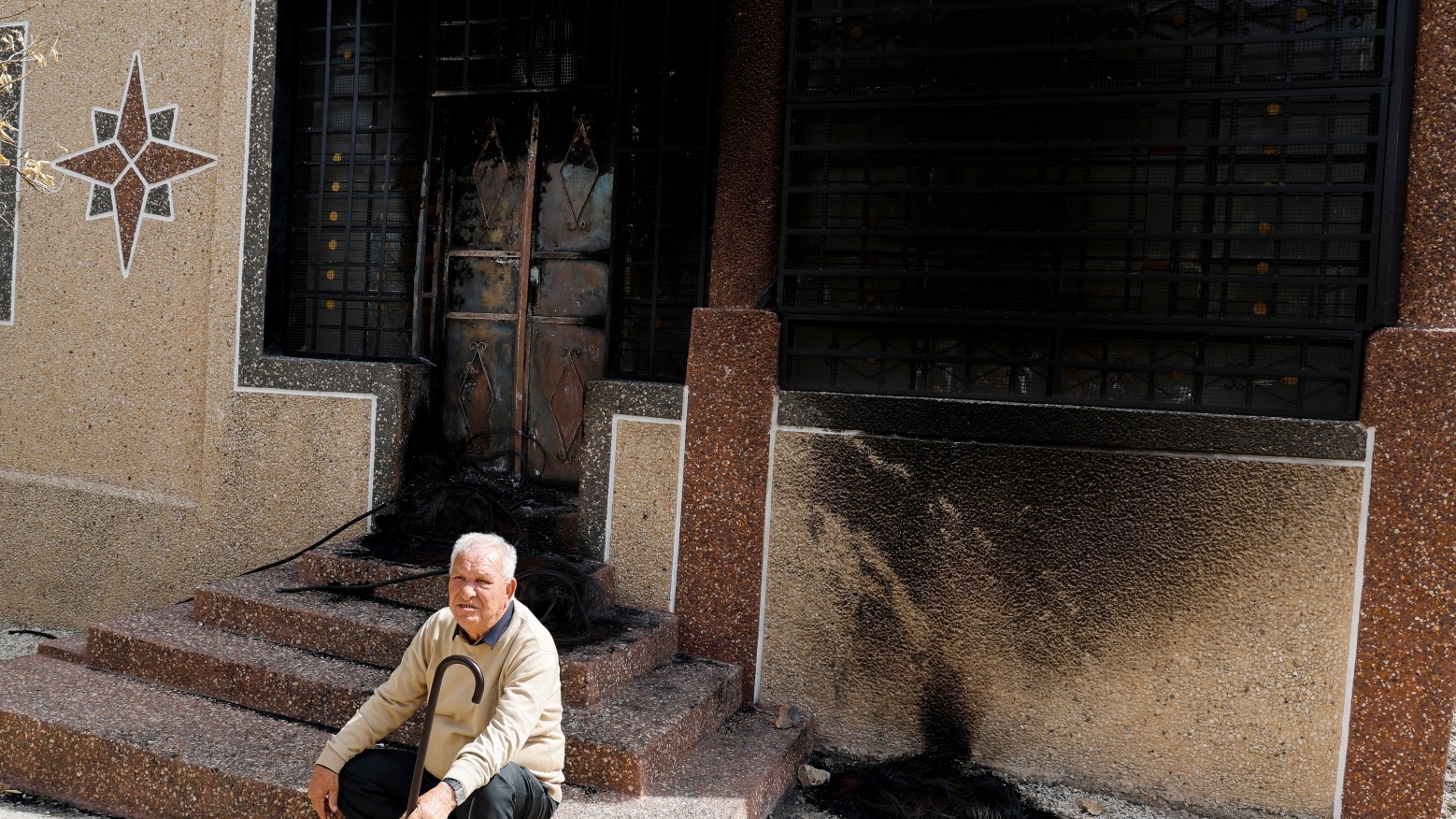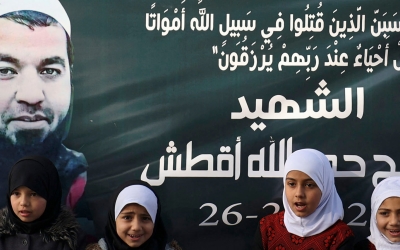Occupation: How Huwwara became a target for settler destruction

The recent attack on 26 February in which two Israeli settlers were killed in the village of Huwwara occurred amidst a growing armed resistance movement in the occupied West Bank.
The Israeli military has also escalated its violence against the Palestinians with an increase in night raids on Palestinian towns which have left scores of people dead, including women and children, and two major massacres on 26 January in Jenin and 22 February in Nablus.
Due to its location on Route 60 between the settlements, Huwwara became a central economic attraction for business activities
With the Israeli far right taking control of the government and its leaders inciting violence against the Palestinians, new armed Palestinian resistance groups have formed and flourished in the West Bank, such as the "Lions’ Den" in Nablus and a similar local one in the Jenin refugee camp.
On the night of 26 February, settlers from the illegal settlements of Har Brakha, Yitzhar, and Kfar Tapuach, which surround and besiege the village of Huwwara, decided to wage a brutal attack on the Palestinian village.
They rampaged through the village, setting homes and cars ablaze, destroying property, and killing a Palestinian - in a manner that some Israeli press reports likened to the Nazi Kristallnacht. But, this time, the violent acts were not marked by broken glass and burning synagogues, but by towering flames terrorising Palestinians and wreaking havoc on their lives.
So how did tensions escalate to this level and how did Huwwara become the centre of these violent confrontations? Why did the settlers launch this attack and how did this city become crucial to the settler project?
'Settler-friendly' Huwwara
Huwwara was considered a "tolerant" village for more than a decade, as it was not hostile towards the settler presence, Israeli flags, banners in Hebrew, etc.
Although it was popularly recognised as a "comfortable and safe" place for settlers, so-called hill gangs would periodically cross into the village to attack Palestinians and their property.
The village was also recognised for what Boaz Ha'atzni, an Israeli activist who gives tours in the West Bank, described as a transformation after the Second Intifada from "terrorism" to "economic prosperity" (i.e. becoming settler-friendly).
In an interview with Israeli Channel 14, he goes on to explain that during the siege of Nablus in the Second Intifada, the village was incentivised to abandon resistance to ensure safe roads for settlers. Due to its location on Route 60 between the settlements around Nablus and their way to Jerusalem, Huwwara became a central economic attraction for business activities.
Ha'atzni further explained Israel's strategy to placate occupied Palestinians in the West Bank village by relaxing checkpoint access - allowing it to remain open 24 hours a day - and easing conditions that would turn Huwwara into an economic centre where Palestinians would willingly maintain calm and avoid violent confrontations.
Economic depression
However, the situation in Huwwara - and the West Bank, at large - began to change following the Covid-19 pandemic.
Ynet reporter Elisha Ben Kimon cited the closure of checkpoints and cities as part of Covid-19 restrictions as a cause for extreme poverty and other conditions he calls "incentives for terrorism".
He says that Jenin and Nablus in particular were greatly affected economically. This includes Huwwara, which was impacted severely by the shortage of financial revenues that come from all travellers via Route 60, whether settlers or Palestinians.
Israel’s plan to tie Huwwara and the West Bank in general to commercial activity was a tool to reproduce the conditions of the occupation. Occupation forces rewarded the obedience of the villagers by allowing commercial activity to take place.
Certainly, the closed checkpoints and crossings were the main reason for making the epidemic doubly oppressive, as the economic incentives were drastically reduced.
Either Huwwara or the settlers
As mentioned, the interest in making Huwwara a "settler-friendly" village after the Second Intifada was linked to its central geographical location on Route 60. The road on which it is located is vital for the settlements around Nablus, linking north and south, and connecting them to other settlements in Jerusalem and Ramallah.
It is therefore not easy to abandon Route 60 and construct bypass roads due to geographic conditions. And there was never a choice other than for Huwwara to capitulate to occupation forces and accept the presence of the settlements.
Huwwara was to accommodate the needs of the settlers or face being "wiped out" - a process launched in full force during the rampage last week, in which settlers carried out at least 300 attacks.
Huwwara is located in "Area C" (according to the classifications of the Oslo Accords), which falls under Israeli military control.
Finance Minister Bezalel Smotrich, who advocated for Huwwara to be “wiped out”, was one of the leading politicians demanding the current government’s annexation of Area C, which constitutes about 61 percent of the area of the West Bank.
Huwwara, in particular, is legally isolated, as it serves as a major checkpoint controlled by the military. It now faces an even greater challenge following its economic decline.
Since 2022, it has served as a site for Palestinian armed resistance and escalated Israeli settler and military violence against Palestinians. In September, a Palestinian man was killed after the Israeli military accused him of trying to "ram" his car into a Land Cruiser.
In December, a young man was executed at point-blank range after he refused to be arrested by an Israeli soldier. A battle to raise the Palestinian flag in the village was also a flashpoint in escalating tensions.
In Huwwara, Israel’s failed "economic containment" policy has now been replaced with one to "wipe out" the village. Last week’s pogroms against Palestinian villagers, supported by Israeli leaders seeking land annexation, will most certainly end in catastrophe.
The views expressed in this article belong to the author and do not necessarily reflect the editorial policy of Middle East Eye.
Middle East Eye propose une couverture et une analyse indépendantes et incomparables du Moyen-Orient, de l’Afrique du Nord et d’autres régions du monde. Pour en savoir plus sur la reprise de ce contenu et les frais qui s’appliquent, veuillez remplir ce formulaire [en anglais]. Pour en savoir plus sur MEE, cliquez ici [en anglais].






